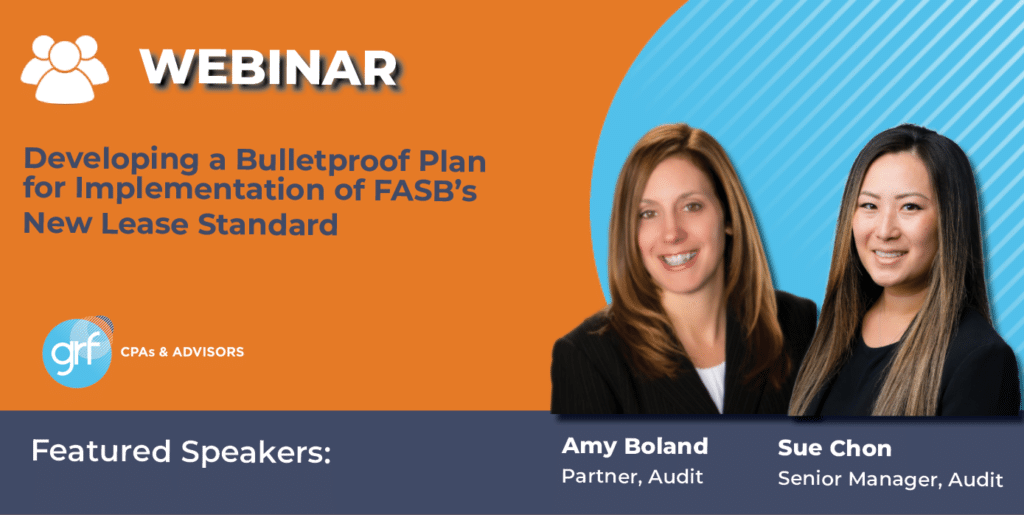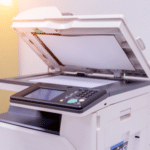May 2, 2022
After helping numerous clients implement Accounting Standard Update (ASU) 2016-02, Leases (Topic 842), GRF’s team of audit specialists has compiled a list of tips, from their perspective as practitioners, to help organizations struggling with the new standard. Before considering the steps outlined below, it’s first helpful to understand the impact of Topic 842.
Overview of Topic 842
Topic 842 was implemented by the Financial Accounting Standards Board (FASB) to increase transparency and comparability among organizations by recognizing lease assets and lease liabilities on the balance sheet and disclosing key information about leasing arrangements. The main difference between the previous accounting standard codification (ASC 840) and Topic 842 is the recognition of lease assets and liabilities on the balance sheet (or statement of financial position) by lessees for those leases classified as operating leases under the previous GAAP.
The new standard has a larger impact on lessees – lessor accounting was not fundamentally changed. ASC 842 is applicable to any entity that enters into a lease, and applies to all leases and subleases of property, plant, and equipment. It does not apply to non-depreciable assets accounted for under other FASB ASC topics including leases of intangible assets, those to explore for or use nonregenerative resources (minerals, oil, and natural gas), leases of biological assets (such as timber), inventory leases, and leases of assets under construction. For specifics on lease definition, classification, and components with examples of presentation and disclosure, watch GRF’s webinar March 2022, “Developing a Bulletproof Plan for Implementation of FASB’s New Lease Standard.”
Due to the COVID-19 pandemic, the effective date has been extended an additional year for public entities, and for all other entities the date was pushed to fiscal years beginning after December 15, 2021. While delayed, the new standard is now applicable and effective for all private companies and not-for-profits for fiscal year beginning after December 15, 2021.
Tips for Successful Implementation
What can organizations do to ensure successful implementation? With a few simple steps, you and your finance team can begin implementation of ASC 842 efficiently and meet your deadline for compliance. Your team should research and apply all practical expedients that FASB developed to save time and contain the cost of implementation.
1. Set up a task force
Organizations who have been successful with implementation started with a task force. Include internal and external finance professionals with the expertise to assess the impact of adopting ASC 842. Include your auditor in your task force!
2. Review your leases
Determine your current population of leases. Assess each lease and determine the type of each (finance vs. operating lease).
3. Select which date is applicable to each lease
Options include using the effective date or the beginning of the earliest comparable period presented.
4. Consider each lease individually
Items to consider when evaluating each lease:
- Lease term, including extensions, renewals, and early-termination clauses
- Account for purchase options
- Identify lease payments
- Account for variable lease payments
- Determine the discount rate to use when calculating the present value of operating or finance lease payments
- Account for the lease agreement’s initial direct costs
5. Evaluate and record
With the information above, carefully document your methodologies and record related journal entries.
6. Consider the appropriate presentation and disclosure
GRF’s webinar, “Developing a Bulletproof Plan for Implementation of FASB’s New Lease Standard” provides an in-depth overview of presentation and disclosure for leases under the new standard.
Post Implementation
Following implementation of Topic 842, make sure you have accounting policies and procedures to support the decisions made on each lease and their documentation. This will likely include the creation of some new general ledger accounts for more streamlined financial reporting and disclosure preparation. It is also important to update any necessary internal controls that will be impacted by the new lease process.
Next Steps and Resources
Implementation of Topic 842 can be tricky and time-consuming. Organizations may benefit from working with a CPA versed in the new lease standard with best practice to draw upon for successful implementation.
View the webinar recording
Amy Boland, CPA
Partner, Audit
Sue Chon, CPA
Senior Manager, Audit



